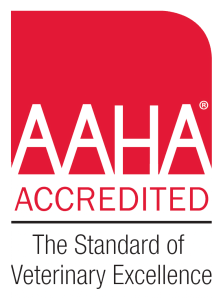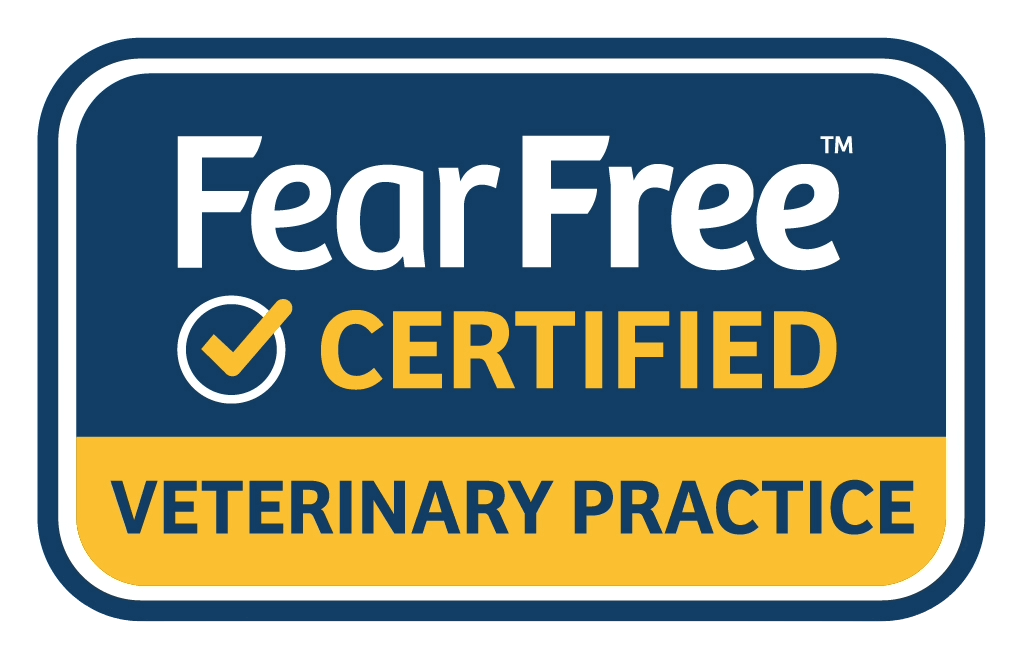IMPORTANT: Have you completed your Surgical / Anesthesia Consent Form?
Click here to fill it out!
Preanesthetic Patient Care Plans for Dogs
Our goal for your dog or cat is to have a safe, fear free, comfortable anesthetic experience and gentle recovery. We know that anesthesia can be scary for both you and your pet. We want to partner with you and ask you to help us with our shared goals.
How to Reduce Fear, Anxiety, and Stress
Fear, Anxiety and Stress in your dog can directly affect anesthesia safety and increase complications. In our experience, pet parents sometimes do not see the level of fear, anxiety, and stress that we are trained to see. Specifically, some dogs can be frightened or over-stimulated coming into the hospital. We know that asking pet parents to follow our preanesthetic plan can require more from you; however, you are part of our team. By following our guidelines, you are helping our healthcare team, help your pet. Each of our canine patients requires special consideration when coming into our hospital for general anesthesia. The following can help reduce fear, anxiety, and stress.
Traveling to the Hospital
Ensure your dog can get in and out of the car easily, ideally on its own. Gentle assistance may be required in older patients.
Arrive at the hospital. If you would like to wait in your car, please call the team (615.975.BLUE). We will escort you and your pet straight into an exam room for your operative check-in.
Admission
Please walk your dog prior to admission and allow enough time for them to urinate and defecate. This will aid in keeping your dog comfortable pre- and post-operatively when they potentially will be too sedate to walk well on their own. Admission time is between 7:30am-8:00am. Frequently, our team accommodates our clients and patients with different admission times. Please follow the time that was verified with you verbally. We ask that you allow 15-30 minutes for the admission process so that the nurse on duty can complete all necessary paperwork and answer any questions you may have.
Calming Medications
Our Canine Preanesthetic Calming Kit will be provided to ensure that you are successful in providing calming therapy.
Our veterinarians may prescribe a medication called trazodone and /or gabapentin. These medications are extremely safe and gentle for dogs. They will help your dog feel more relaxed traveling to the hospital and while waiting for their procedure. Dogs need to take their pre-visit medications 2-3 hours prior to traveling to the hospital. This means you may have to get up a little early to ensure your dog gets this medication at the proper time.
Zylkene, a calming milk protein supplement, may also be recommended or directed to be given to your dog. We may recommend you start this supplement 2 days prior to your appointment.
Offering medication in a small amount (around 1 tablespoon) of pate consistency canned dog food, meat baby food, small bite of chicken, or Greenie Pill Pocket is encouraged. Please do not give more than this small amount of this food the morning of anesthesia. This means do not give a full meal the morning of anesthesia as we need your dog to be fasted. Free choice water is encouraged. We advise against using cheese or peanut butter.
If we already know that your dog has high levels of fear, anxiety, and stress in our hospital, we may recommend giving a “boost” dosage of this medication the night before AND morning of the procedure.
Medications To Discontinue Prior To Anesthesia
Enalapril, benazepril, or amlodipine: These medications help lower blood pressure; however, we need to control blood pressure under anesthesia and these medications can interfere with our goal. Please discontinue these medications 1 day prior to anesthesia. After the procedure, these medications need to be resumed at normal routine dosing times.
Medications that help heart disease, seizures, pain, or antibiotics
If your dog has been prescribed any of the above categories of drugs, please give dosage at the normal dosing interval. If the medication is due in the morning prior to anesthesia, please give the morning dosage. Please give medications with a tiny amount of food. NO full meals.
How to Reduce Vomiting, Nausea, and Regurgitation
Feeling nauseous is not a pleasant experience and vomiting can increase the risk of complications such as aspiration pneumonia and esophagitis in our patients. Patients are often given a combination of medications surrounding anesthesia and pain management therapy. Our goal is to reduce your dog’s feelings of nausea related to anesthesia and perioperative medications. Therefore, we have these recommendations.
If you have a brachycephalic breed- these are Pugs, French Bulldogs, English Bulldogs, Boston terriers, or any other “smoochy” faced dog. These dogs are known to have an increased risk of gastrointestinal issues and reduce airway function. Aspiration pneumonia is a higher risk in these breeds. Therefore, we recommend the following.
Beginning 2-4 days prior to anesthesia, give stomach acid reducing medication, omeprazole (aka Prilosec OTC). This medication is given once daily.
|
5-10 pound dog |
Give 5 mg omeprazole |
|
Give 10 mg omeprazole |
|
Give 20 mg omeprazole |
|
Give 30 mg omeprazole |
|
Give 40 mg omeprazole |
|
Give 40 mg omeprazole |
How is omeprazole supplied: 20 mg tablets and 10 mg, 20 mg, 40 mg capsules
We will often prescribe an anti-vomiting medication called CERENIA to patients to take the evening before surgery. Please follow the dosing instructions for this medication that has been sent home for your pet.
Discharge
Dogs undergoing anesthetic procedures such as dental cleanings, oral surgery, tumor removal, spays, and neuters go home the same day. In special circumstances, such as emergency or complex surgery, your pet may need to be transferred to a 24-hour facility. On discharge you will be given oral and written discharge instructions. Again, please allow 15-30 minutes for discharge so we can go over at-home care and any medications we may be sending home.
How to Manage a Fear Free Return Home
We know that patients often need a quiet place to continue their recovery at home. We encourage you to keep your dog in its carrier when you get home. Place the carrier in a quiet room away from other pets and small children. Open the carrier and allow your small dog to come out on its own when ready.
For larger dogs not in carriers, allow them the same experience of being in a quiet and calm room or sitting with family members.
We advise that small children be restricted from interacting with dogs returning home from anesthesia/surgery for a few hours for your pet to more completely recover.
Offer food and water only when your dog is walking steadily on its own and able to stand normally to eat. Offer pet’s regular diet initially.
If your pet will not eat in the first 12 hours after returning home. Encourage eating by offering “yummy” foods such as canned dog foods, meat baby foods, or other known favorites. It is more important that your dog eat something initially, even if it’s not their “normal” meals after anesthesia and surgery.
After Hours Access to Our Healthcare Team
to help reduce your fear, anxiety and stress
If you return home and have questions about your dog’s behavior or incision concerns, we’re here for you. We invite you to download the Anipanion Pet App to your smart phone today. This is complimentary service for our post-operative patients up to 1-week post-op.
If you feel your pet is having a true emergency, take your pet immediately to the nearest pet emergency room at Nashville Veterinary Specialist at (615) 386-0107 or Blue Pearl (615) 333-1212.
Thank you for allowing the Blue Oasis Pet Hospital team care for your family dog!
Want this information to go? Click to get a printable version!



